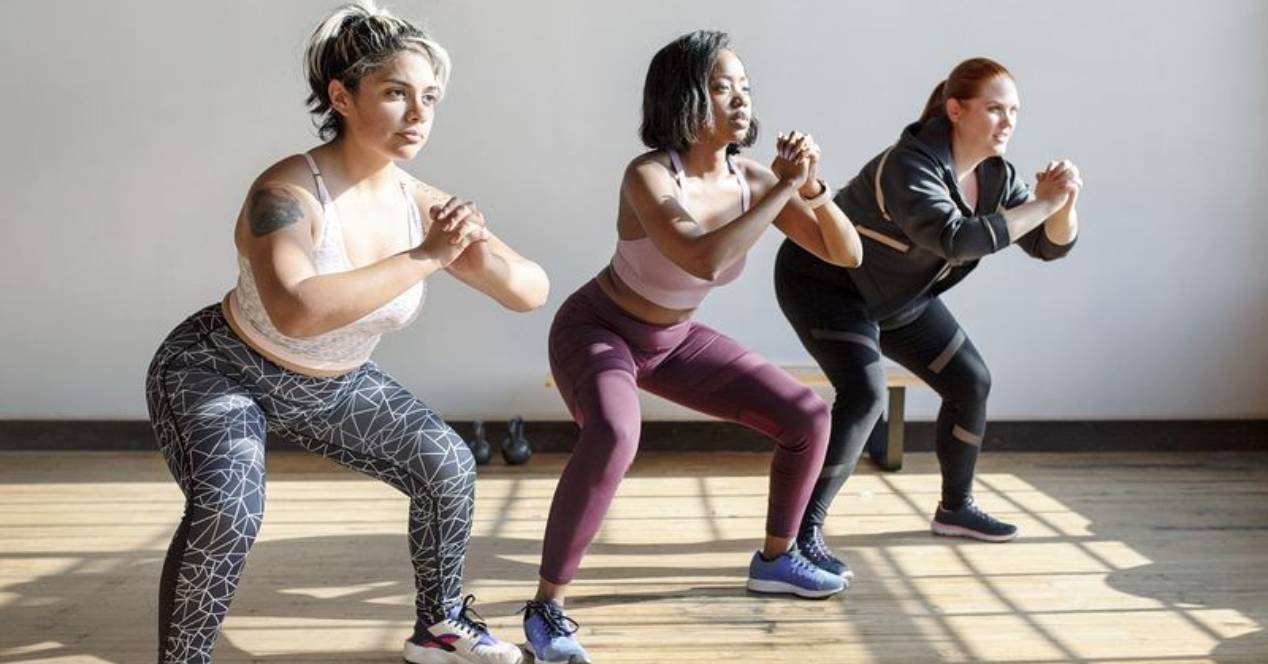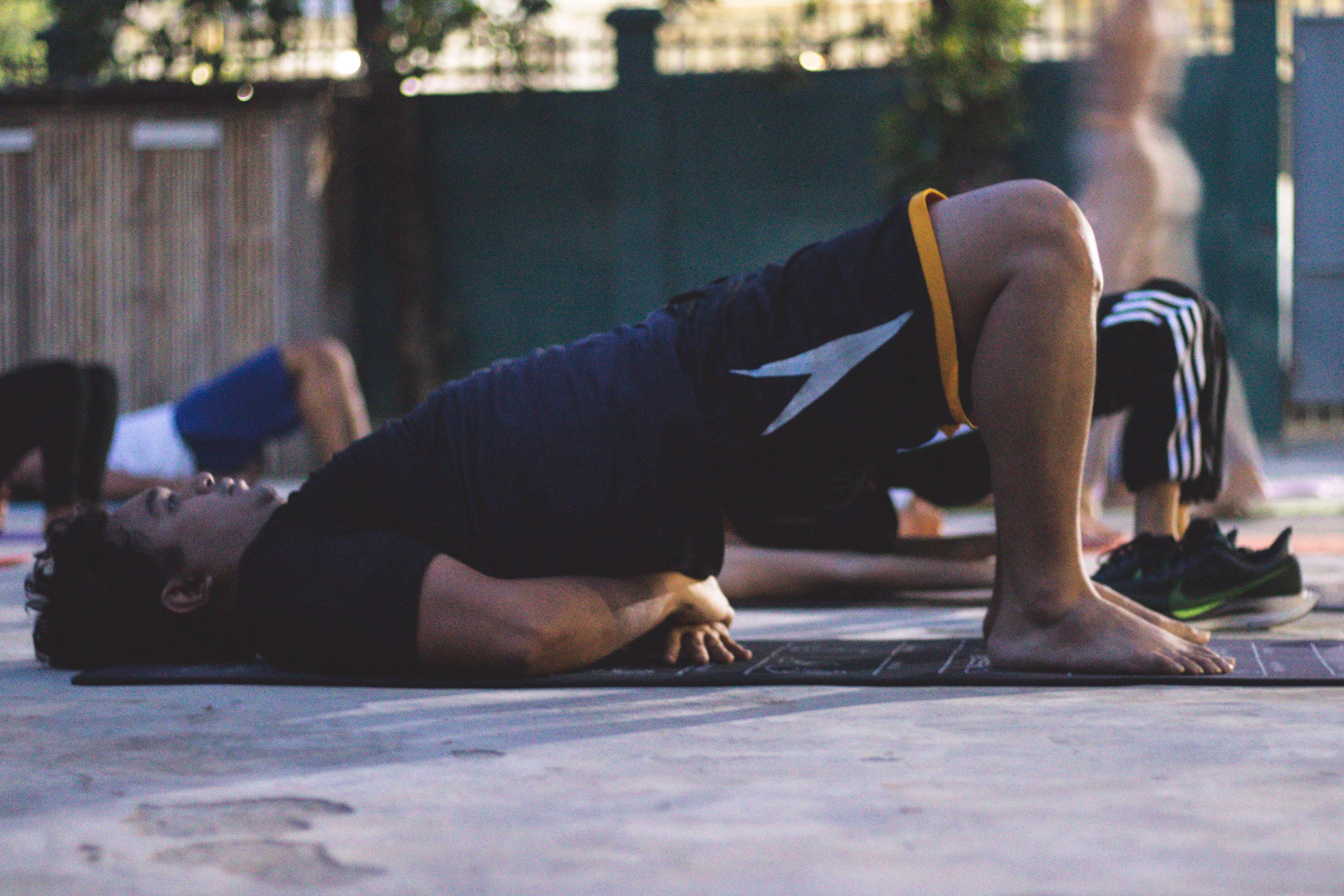
The buttocks are one of the strongest body parts that we must train, both men and women. How to increase the gluteus is a question that many people ask themselves and, possibly, it is very easy to answer. What you must be clear about is that you will not notice a radical change in a short time.
Unfortunately, most of us suffer from gluteal amnesia, which happens when we spend a lot of time sitting and lying down. Let's say our butt falls "asleep" and loses muscle tone.
Exercises to increase gluteus
Exercises to increase the gluteus can be part of any lower body training routine. However, they are not recommended to be done every day, since it is necessary to rest the muscle.
Glute bridge
Safe for beginners, the glute bridge isolates and strengthens the gluteal muscles, hamstrings and core while improving hip stability.
- We will lie on our backs with our knees bent and our feet flat on the ground. We will place the arms at the sides with the palms of the hands resting on the ground.
- We will contract the abdominals and the gluteal muscles, we will press the feet against the ground and we will lift the hips off the ground. The body should form a straight line from the shoulders to the knees.
- We will pause at the top for 5 seconds, then slowly lower back to the starting position.
Strides
Walking lunges are an excellent exercise to build and tone the gluteal muscles, while also targeting gluteal enlargement and improving balance. If we have any problems with our knees, ankles and hips, we will ask a physical therapist before trying this movement.
- We will take a dumbbell in each hand with the arms at the sides (if we want to do them with weight).
- We will stand up, with the feet separated to the width of the hips. We will take a step forward with the left foot.
- We will bend the left knee towards the ground until it is parallel to the ground. This is the forward lunge position.
- We will pause and maintain this position for a few seconds.
- Then we will take a step forward with the rear (right) leg and repeat the stride with this leg.
hip lift
You can use bars or sandbags in this exercise. It is one of the most effective exercises to increase gluteus. The activation of the fibers is much greater in this movement, and we can bet on low and medium loads. It must be taken into account that when we force the gluteus at the top of the course, the fibers will be stimulated more.
For this move, we'll start by sitting on the floor with our backs along the edge of a bench, knees bent, and feet slightly wider than hip-width apart. The scapulae (shoulder blades) should rest against the edge of the weight bench in the center of the bench.
- We will place a bar on the hips (you can also use a disc or dumbbells).
- We will squeeze the glutes, pressing through the heels of the feet and pushing the bar up until the hips are in line with the shoulders and knees.
- The bench should support the area of the middle of the scapula. We will maintain a firm core, with the chin slightly inward.
- We will slowly lower the bar until the hips are only a few centimeters from the ground.
- We will squeeze the glutes and lift again.
- Throughout this movement, we will keep the hips moving the entire time with a slight pause/contraction of the glutes at the top of the range of motion.
Good morning
It is an exercise very similar to the deadlift, but we have a load on our back instead of on the arms. The greatest activation occurs when you reach the top and press very hard. The movement does not start from the lower back.
- We will stand with our feet shoulder-width apart, knees slightly bent.
- We will place a bar with the appropriate weight on the shoulders so that the bar rests on the trapezius muscles of the upper back, near the shoulders.
- We will strengthen the upper part of the back and the abdominals and we will breathe well.
- We will exhale as we articulate the hips, sending the hips back and the upper body forward.
- We will stand once the upper part of the body is almost parallel to the ground.
- We will inhale while we return to the starting position.
Bulgarian squat
Basically, anything that involves some kind of bending over at the hips will strengthen the glutes and legs. However, no squat repertoire is complete without some type of Bulgarian squat. The only difference to a split squat is that the back foot is elevated. This small change greatly increases the difficulty of the movement by testing balance, further engaging the core and placing a greater load on the front leg.
- Find a step, a bench or any other contraption on which we can rest a foot, it must be at knee height.
- We will get into a forward lunge position with the torso upright, the core strengthened and the hips square with the body, with the back foot elevated on the bench. The front leg should be half a meter or so in front of the bench.
- We will go down until the front thigh is almost horizontal, keeping the knee in line with the foot. We will not let the front knee go beyond the toes.
- We will drive up through the front heel back to the starting position, again maintaining the measured movements.
cable kick
Gluteal kickbacks can be effective in increasing the gluteus. Depending on the technique, we can effectively challenge the gluteus medius or the gluteus maximus. In this variation, setup and technique are crucial to the success of the exercise and to placing maximum tension where it needs to be.
- We will place a strap attached to the cable around the ankle.
- We will keep the back in a neutral position with the abdominals contracted.
- The body will be positioned off center with the working leg in line with the cable attachment.
- We will lean the body forward and we will extend the leg behind us while maintaining a slight bend in the knee.
- We will move the leg by squeezing the gluteus, not arching the lower back.
kettlebell swing
With the swing we work almost our entire body, and it is a very fun way to exercise the gluteus and abdomen.
- We will stand up, grabbing the kettlebell.
- We will keep the arms long and loose while we squeeze the shoulder blades and contract the abdomen.
- We will bend the knees slightly, we will shift the weight of the body to the heels and we will lower the butt back and towards the wall behind us.
- Explode through the hips to send the weight up from the quads. We will aim at chest height, with arms outstretched. Achieving this final position requires us to move our hips, contracting our core while squeezing our glutes.
- As the kettlebell begins to descend, we'll let the weight do the work while we prepare the body for the next repetition. We will return to place the weight on the heels while we rotate the hips and load both the hamstrings and the glutes.
weighted sumo squats
Performing them on steps is to add a greater range of movement, but if we are beginners we will start doing them on the ground. The weight should not be very high either because we could suffer swings by not mastering the technique.
- We'll start standing with both feet in a wide stance and turning outward at a 45-degree angle. We can perform this exercise using just body weight or holding a dumbbell in each hand or a barbell across the back for an added challenge.
- We will make sure that the glutes are already active. As we release the glutes, we allow the body to sink directly into a squat, with the knees out toward the toes.
- Once we have reached a 90 degree angle between the thighs and the shin, we will squeeze the buttocks to raise the body back to the starting position.
Dead weight
The conventional deadlift is one of the most popular exercises, and with good reason. Challenge the muscles around the hip, knee, and ankle. It also tests the muscles around the wrist, elbow, and shoulder to hold the bar, but those joints don't directly contribute to range of motion. Since it has a primary focus on hip extension, it can be used while training your back, legs, or glute augmentation.
- We will stand up, pushing the hips back as we reach for the bar.
- We will let the knees bend naturally.
- If we are tall, have long legs, or have limited hip flexion ability, we may want to raise the bar with a small box under each weight plate.
- Once we have made contact with the bar, we will secure the grip and tighten the abdominals.
- As we work our way across the floor with our quads, we'll drive our hips forward as we reach the top.
- We will return safely to the starting position by rotating the hip and controlling the bar as it returns to the ground.

When are the results noticeable?
There is no exact time frame for when a person can expect to start seeing results with these glute movements. The answer depends on the consistency of the person's workouts, genetics, nutrition, and other factors. However, in a general sense, a person can expect to start seeing results in a few four to six weeks.
We will first feel the results before seeing them. The general rule of thumb is that we will feel stronger and be able to do more weight-bearing exercises within the first four weeks of the training routine. In the next four weeks (that is, weeks five through eight), other people (friends and family) will begin to notice the changes. But each person will not notice "significant changes" until weeks nine to twelve. The results will come, but it takes patience and discipline.
Also, to build muscle, the body needs additional fuel to build it. So we need to make sure we have a caloric surplus. The body will not be able to increase gluteus if it is burning more calories than it is consuming.